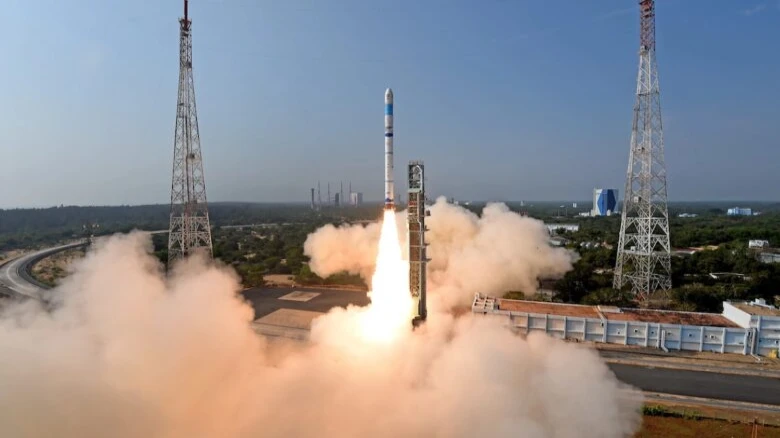Regional

The Indian Space Research Organization (ISRO) has found in its assessment that there are...
Digital Desk: The Indian Space Research Organization (ISRO) has found in its assessment that there are 27,000 cataloged Space objects, of which 80 percent are Space debris. As a result of human activity, outer space is also congested due to pollution.
"There are millions of Space objects less than 10 cm in size that are uncatalogued and pose a very dangerous situation for Space assets," said S Somanath, chairman of ISRO, reported NDTV.
The threat posed by space debris is exacerbated by the implications of anti-satellite testing, a capacity limited to China, the United States, India, and Russia, wrote Pallava Bagla in an opinion piece published on NDTV.
The impeccably launch of India's reliable PSLV (Polar Satellite Launch Vehicle) on the morning of July 30 was accompanied by its own set of pre-launch challenges, Bagla noted in an opinion piece on NDTV.
"There was traffic congestion in Space above Sriharikota, and the launch was postponed by one minute," the ISRO chief confirmed.
Moreover, the rocket was scheduled to launch at 6.30 a.m., but it didn't happen until 6.31 a.m. It is technically known as "space conjunction at the 500 km plus orbit densely packed with satellites."
Furthermore, during the "Made in India, Made for Singapore" launch on July 30, India conducted a novel orbit reduction experiment with the PSLV rocket's extended stage. For the first time, the PSLV's fourth stage, which was positioned at an altitude of 536 km above Earth, was purposely manoeuvred to descend to a 300 km orbit via a sequence of precision operations (consisting of two manoeuvres), Bagla noted in an opinion piece on NDTV.
"This was part of ISRO's voluntary 'Swachh Antriksh Abhiyan' or Keep Space Clean effort to reduce Space debris," Somanath said.
According to Somnath, the 500 km low earth orbit is a highly prized orbit that was voluntarily vacated by ISRO in the spirit of 'vasudhaiva kutumbakam' - as applied to space. In addition, by lowering the altitude to 300 km, the PSLV's squandered fourth stage would reenter Earth and burn down in 30 days, rather than the 18 years it could have lingered in the higher orbit.
In addition, India successfully deorbited the non-functional Meghatropiques satellite. Instances of Space debris washing up on shores, like the case in Australia, occur sporadically.
Using modern radar systems, optical equipment, and satellites in orbit, the US Space Command estimates the presence of 26,783 Space entities of 10 cm or more, as well as countless smaller bits such as detached paint particles, among other things, the opinion piece noted.
Also Read : No-confidence motion: Congress MP Gaurav Gogoi throws three questions to PM Modi
According to the 'Space Situational Assessment Report' released by ISRO in March, the distribution of Space entities is highly unique, with roughly 40% attributable to the United States, approximately 28% affiliated with Russia and the former USSR, and an additional 19% associated with China.
In stark contrast, India's contribution consists of only 217 Space objects, accounting for a mere 0.8% of total global Space debris.
Union Science Minister Jitendra Singh said, "ISRO has been taking necessary measures to safeguard all of its Space assets from intentional and accidental close approaches by Space objects, including operational spacecraft and space debris objects."
The opinion piece added that according to the most recent count, ISRO now has 52 operational satellites in orbit. According to Somanath, six non-operational satellites and 105 chunks of Space junk (including rocket bodies and parts) of Indian origin remain in orbit. Collectively, India has launched 130 satellites, with 73 in low Earth orbit (LEO) and 54 in geostationary orbit (GEO).
Mangalyaan remains in orbit around Mars, whereas the Chandrayaan series consists of three satellites orbiting the Moon. Since the launch of the Aryabhatta satellite in 1975, India has launched satellites that have an impact on nearly every area of daily life in the country, including weather prediction, television communication, and aiding the country's vast digital infrastructure.
Somanath emphasizes that India currently has no proven examples of recorded losses of Indian Space assets owing to collisions. However, India did experience inexplicable circumstances that resulted in the loss of the INSAT 2D and GSAT-6A satellites.
With over 50 operating satellites, India's space assets are worth over 50,000 crore, demanding stringent safeguards. These significant satellites play an important part in the country's economy, highlighting India's reliance on these essential elements in the sky.
The 'ISRO System for Safe and Sustainable Space Operations Management' (IS4OM), which was established the previous year, serves as a framework for consistently reviewing data in order to predict the trajectories of other Space objects that come into proximity with Indian space assets. ISRO's in-house Space Object Proximity Analysis (SOPA) generated roughly 14,000 notifications about imminent close encounters within a 1-kilometer range in 2022.
Additionally, the US Space Command received approximately 13,000 reports of close approaches. These notifications were reevaluated using more precise orbital data from India's operational satellites.
Leave A Comment